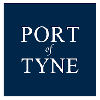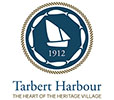

Harbour Master
Occupational profile
This occupation is found in the maritime sector in ports, harbours and marinas of varying size, from a major gateway for international trade to a single jetty jutting out into a river or sea. A port is a location on the coast that can be used to load and unload cargo; a harbour is a place on the coast where vessels may seek shelter; a marina is a port for leisure craft. Ports are used for a variety of purposes including recreation, commercial trade and defence. Employers range from private, trust, the state and local authorities.
The broad purpose of the occupation is to enforce regulations and industry codes of practice in a particular port, harbour or marina in order to ensure the safety of vessel navigation, the security of the harbour, the protection of the marine environment, and the safe operation of the port facilities.
The Harbour Master is accountable to the Duty Holder (a person whose sole responsibility is to ensure that the port complies with the Port Marine Safety Code) for the safety of navigation within the harbour jurisdiction and to the Board for marine governance. In their daily work, an employee in this occupation interacts with ship masters, enforcement officers, stakeholders, tenants, members of the public, agents, customers, marine pilots as well as port operations and commercial staff. The occupation is found both in office-based environments as well as outside in all weathers and may be conducted both on and off the water.
Harbour Masters hold ultimate decision-making responsibility at all times, day or night, but may delegate authority to their deputies and/or assistants. In their daily work, an employee in this occupation leads a team of marine employees who may deputise or assist in undertaking the responsibilities of managing the harbour with delegated duties in the absence of the Harbour Master.
A Deputy Harbour Master will be empowered with the full authority of the Harbour Master when deputising in the absence of the Harbour Master; an Assistant Harbour Master will have areas of responsibility defined by the Harbour Master and report directly to the Deputy Harbour Master or Harbour Master. Harbour Masters are empowered by statute to issue Directions and Notices to Mariners to ensure the safety of all harbour users, to review, implement and enforce policy applicable to the area of jurisdiction. They investigate marine accidents and incidents and can make recommendations in order to improve safety.
An employee in this occupation will be responsible for running a port through powers and responsibilities granted by statute. The Harbour Master has the power to permit vessels to enter or leave the port, as well as overseeing vessel traffic movement in the port approach and in the port area.
More generally, Harbour Masters oversee the planning and execution of port marine operations such as designating where vessels should lie within the harbour, vessel traffic management services, the provision of pilotage services, conservancy and any other marine-related operation. They work in close cooperation with commercial partners to ensure the maximum utilisation of port facilities as well as co-ordinating and managing responses to port incidents and emergency situations.
Developing an apprenticeship standard
Each apprenticeship standard is created by ‘Trailblazer’ groups of employers, interested in the occupation under development. These employer groups work together to develop the standard and the associated assessment plan. There are a number of stages to the process of developing a standard, and each stage is approved by the Institute for Apprenticeships (IFA).
First, an ‘expression of interest’ (EOI) is submitted for approval, describing the occupation and the duties involved. Next, the apprenticeship standard is developed, detailing the knowledge, skills and behaviours (KSBs) required to become fully competent in the occupation. Finally, an assessment plan is created which describes the assessment methods to be used for each of the KSBs listed. Once all of these stages have been approved, the IFA allocates a funding band for the standard and the standard is ready to use.
The standard for Harbour Master is now approved and assessment plan is nearing full approval.
Employers involved in creating this standard
- AB Ports (Lead)













